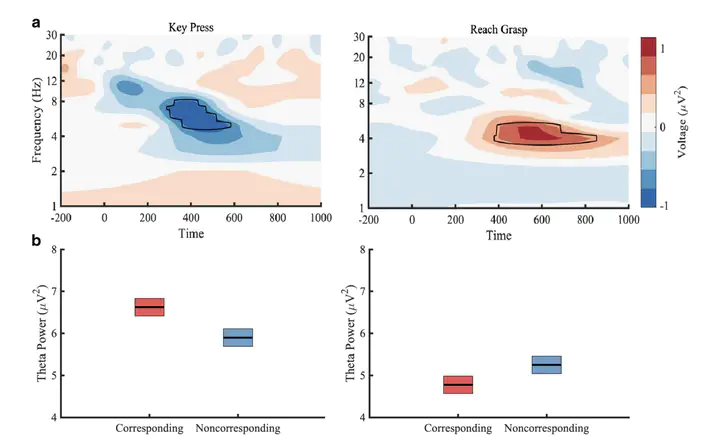
Abstract
A widely held though debatable claim is that the picture of an object like a frying pan automatically elicits features of a left/right-handed grasp action even in perceptual tasks that make no demands on the observer to consider the graspable properties of the depicted object. Here, we sought to further elucidate this claim by relying on a methodology that allowed us to distinguish between the influence of motor versus spatial codes on the selection of a left/right-handed response while electroencephalographic data were recorded. In our experiment, participants classified images of frying pans as upright or inverted using a left/right key press or by making a left/right-handed reach-and-grasp action towards a centrally located response element while we recorded electroencephalographic (EEG) data. In line with previous evidence (Bub, Masson, & van Noordenne, Journal of Experiment Psychology: Human Perception and Performance, 47(1), 53–80, 2021), these two modes of responding generated distinct correspondence effects on performance induced by the same set of images. In terms of our EEG data, we found that neither motor (the lateralized readiness potential) nor visual (N100 and P100) potentials were sensitive to handle-response hand correspondence. However, an exploratory theta analysis revealed that changes in frontal theta power mirrored the different correspondence effects evoked by the image on key press responses versus reach and grasp actions. Importantly, our results provide a link between these disparate effects and the engagement of cognitive control, highlighting a possible role of top-down control processes in separating motor features from the task-irrelevant features of an object, and thus in claims regarding object affordances more generally.